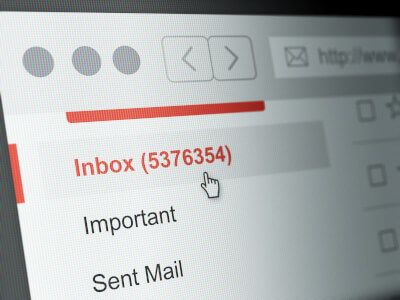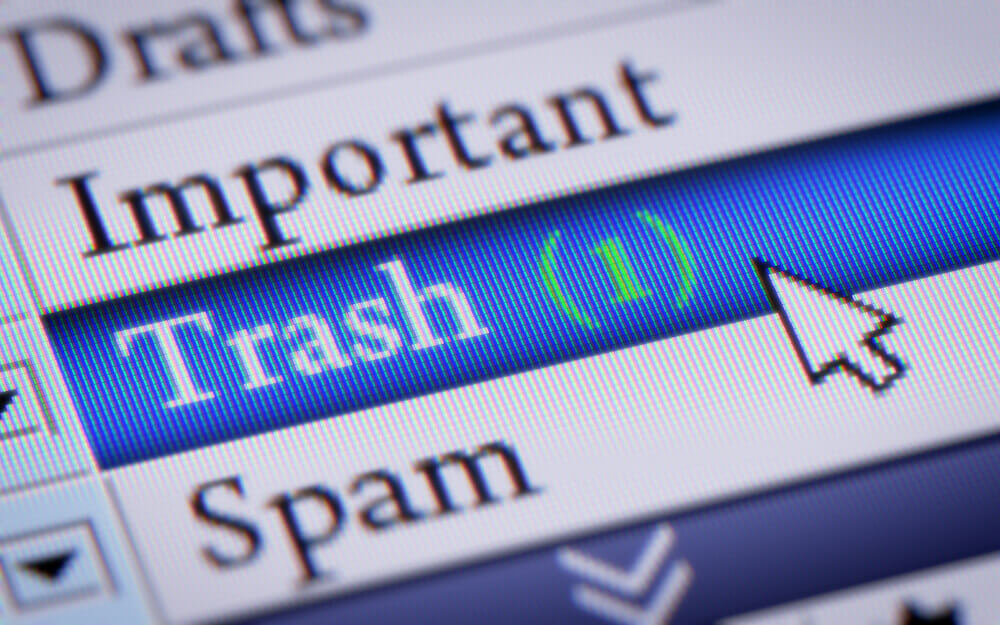Can I keep my email address if I change broadband provider?
 Dan Howdle • October 21st, 2024
Dan Howdle • October 21st, 2024

Most broadband deals these days will offer an email address as part of the package. If that's something you need, it does raise the question of what its long-term value might be should you be planning to switch in future. Different providers have different policies when it comes to keeping hold of it when you move on.
The aim of this guide, then, is to delve deep into the small print of the UK's most popular broadband providers to find out exactly what their policy is with your free email address when you move on. Without further ado.
Can I keep my email address when I switch provider?
In some instances, you can – but sometimes there can be a monthly charge to keep it. The fact of the matter is that the email address you have with your broadband provider is not transferable in the same way as your landline or mobile phone number and in most cases, when you end your broadband contract, you will also lose the use of the accompanying email address. Generally it won’t be deleted immediately, but after a fixed grace period, giving you a chance either to save the contents of your emails or forward them on to another account.
Can I keep my BT email address?
BT gives customers a few options when it comes to keeping their email address when they cancel their BT broadband. If you want to keep all the features of your existing BT email account, 60 days after ending your broadband contract, you will have to switch to BT’s Premium Mail, which costs £7.50 per month. If you do not opt for Premium Mail, your account will automatically switch to Basic Mail, which has fewer features but remains free to use.
Another option is to keep your existing BT email by linking it to a friend or family member’s live BT broadband account. Otherwise, you can close it down completely and set up a new email address with a third-party provider, such as Gmail or Outlook.
Can I keep my Sky email address?
Sky allows you to keep your email address after you cancel your broadband, with no time limit or charge, as long as you continue to use it. Sky will close your email account if it is inactive for a prolonged period, so make sure to log in regularly. There are currently no fees to maintain your Sky email account.
Can I keep my Virgin Media email address?
If you cancel your Virgin Media broadband, you have 90 days to access your Virgin Media email before it is deleted permanently, along with all its contents. This gives you a grace period to save important emails or forward them to a new address. After the 90 days, your email and its contents will be gone.
Can I keep my TalkTalk email address?
If you're cancelling your TalkTalk package, you will lose access to your TalkTalk email unless you upgrade to TalkTalk Mail Plus, a paid service costing £5 per month or £50 per year if paid upfront. This allows you to retain your email address even after leaving TalkTalk broadband.
Can I keep my Plusnet email account?
If you switch your broadband from Plusnet to another provider, you can keep your Plusnet email address for free. However, you must inform Plusnet that you wish to retain the email service before cancelling, as it will otherwise be deleted with your broadband account.
What to do if your broadband provider is going to delete your email account
Although getting a free email address from your provider sounds ideal on paper, since you're unlikely to be able to keep it forever in most cases, it's going to be a better idea to use a third-party free email address for your personal use than one of them. Gmail, among many others, is a good option, and you'll be able to keep it for life.
What is useful about these third-party email accounts is that it doesn't matter which broadband provider you're using because it isn't run by your ISP, so when you switch, it'll still be there and accessible from any machine. This is also great if you're between your exit and activation dates after switching, as you can use your webmail in a coffee house, at work or via whichever connection you're using.
These accounts are free and offer great storage at no extra cost, so if you don't have one already, set one up now. All the storage means you'll be able to forward everything from your old account, and your web-based third-party account will easily have the space for it all.
If you want to download or export your contact list, then you either need to look at the support page of the account you're using or contact your broadband provider to see if they can help. Alternatively, you could just set up an auto-response on your old account which informs your contacts of your new email address when they message you.

You may also have to change the login details for any social media accounts, online banking, or subscriptions as they'll need an account that's in use, should you want to do a password change or anything like that.
If you have any photographs or things you want to keep, then download them straight to your device (be it your phone, tablet, laptop, desktop computer, and the rest) and if storage is an issue, then look for a cheap portable hard drive – there are plenty on the market for very reasonable prices, and you can store everything from your emails on there, as well as using it as a handy thing to back up the files on your computer.
Should you want to have storage for free, then there's a number of cloud options, like Google Drive, where you can store all your photos on what is basically a virtual, online hard drive.
How to protect your email address from future loss
Most broadband providers will let you set up accounts with third-party emails. For example, if you're with BT and want to log in to your account, you can do it with a Gmail address. Broadband providers will give you a new address, but you don't have to actually use it.
Be clear when you're getting your new account and talking to the company's customer service representative that you'd like to use your third-party webmail address, be it Outlook (formerly Hotmail), Gmail, or whichever one you've gone for.
If you have your own email account that isn't tied to your provider, you'll be fine going forward.
